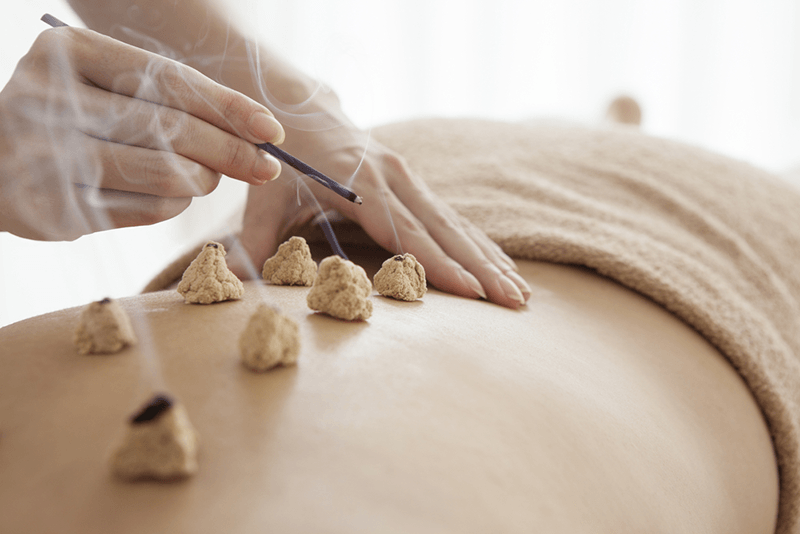If during your stay in Japan, someone should suggest that you join them for a bit of O-kyu, I strongly recommend that you consider your answer ver-r-ry carefully, for, should you accept the invitation, chances are you will suddenly find yourself stretched out stark naked with a dozen little fires burning merrily up and down your defenseless back.
O-kyu, you see, is the centuries-old practice of moxa—or mogusa—a medical theory that involves the burning of small piles of a special powder right on the bare skin at certain—and sometimes at all—of the 657 vital spots in the human anatomy that are recognized by the thinking moxa practitioner as the roots of all evil.
The basic principle of this kissin’ cousin to scorched earth is the belief that all illness is caused by poor blood circulation and or a sluggish nervous system, and mogusa practitioners feel that the heat generated by burning mogusa powder on the bare skin is the best possible method for putting a bit of life in the old blood and for toning up the nerves. I agree that even the smallest of fires burning briskly on one of the more tender portions of my anatomy would no doubt cause my blood to circulate like crazy, but, on the other hand, I am afraid that my nervous system would be completely shattered in the process. I am not, despite, my affinity for the Greeks, a Stoic by nature.
Personal opinion aside, a great many people swear by moxa as the best cure ever for such common complaints as rheumatism, neuralgia, upset stomach (and I can’t help but feel that a fire here would be murder) and, finally, just plain old fatigue, or, as it is known to the advertising fraternity the world around, tired blood. The moxa treatment is really quite simple.
As already mentioned, there are 657 vital spots on the human anatomy on which a fire can be kindled, but, like black magic, the most popular areas are up and down the spine and—hoo, boy!—just behind and below the knees. The moxa practitioner takes great, uh, pains to determine the most suitable locations on any given body for his therapeutic fires, and he carefully marks these locations with a little X. Neat piles of mogusa powder are then poured onto those exact spots and touched off with a stick of burning incense.
Usually only a very small pinch of powder is used, but many patients, operating on the dubious but popular theory of the bigger the dose the better the cure, demand piles of powder that are sometimes over an inch high. Even these hardy souls, however, cannot hope to match the swaggering young samurai of feudal Japan. In those days it was considered a challenge to a man’s courage to undergo the pain of a moxa treatment, and the watchword in this case was the bigger the burn, the braver the man. As a result, it was not unusual for young samurai of the day to sport painful burns a good three or four inches in diameter as they strutted before their less courageous but infinitely more sensible admirers.
Today’s moxa treatment is actually not painful and it now leaves no mark or scar of any kind as a special paper (or sometimes a thin slice of fresh ginger) is first placed over the skin and the powder is burnt on this protective covering. There is no denying, however, that the patient is well aware of an unusual amount of heat wherever the moxa fires may be burning.
Since the only oaths I have ever sworn have had absolutely nothing to do with Hippocrates (in fact, most of them would have stood old Hippo’s hair on end) I am in no position to comment on the efficacy of moxa as a medical treatment. I can say, however, that the simple threat of a moxa treatment is a most effective method of I dealing with noisy children, and a quiet “Knock it off, boy, or I’ll give you a good hot moxa” is enough to put a damper on even the most obstreporous Japanese child.
To say nothing of your obedient servant—
— Carl Hansen









